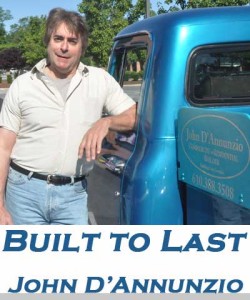Missing the obvious can lead to tragedy
By John D’Annunzio, Columnist, UnionvilleTimes.com
 We learn early on in life about common sense issues. When I build a house or garage or just about any thing that arises in life common sense helps me avoid problems. Should I add another joist over here? Strengthen this wall here? Check the air in the tires when leaving on a long trip?
We learn early on in life about common sense issues. When I build a house or garage or just about any thing that arises in life common sense helps me avoid problems. Should I add another joist over here? Strengthen this wall here? Check the air in the tires when leaving on a long trip?
The answers to these questions may seem obvious, but you’d be surprised how many swimming pool accidents occur due to overlooking common sense.
Each year (according to the US Product Safety Commission) 300 children under 5 years old drown in residential swimming pools. 2,000 more are treated for other submersion injuries. Medical costs are high because these victims may need a long recovery stay in a hospital. Some of these accidents could have been avoided had the proper safety guidelines been employed.
One of the advantages of being a building inspector is getting to apply these guidelines for the public to avoid catastrophic problems.
Here are some ICC code related specifications for swimming pools:
1. Outdoor swimming pools including in ground, above ground, and hot tubs/spas shall be surrounded by a barrier.
2 The types of a barrier could be a chain link fence or solid fence, stone wall or iron railing.
Solid barriers such as stone and brick walls shall not contain indentations or protrusions except for normal construction tolerances and tooled masonry joints. This is so a child can not climb the structure. (Structures must be 48” high)
3 Where the barrier is made up of ornamental iron work the minimum height should be 48” from grade to the top of the horizontal rail and from the bottom of the horizontal rail to grade 2”/ The spacing between vertical spindles shall be no more than 4”. This is so that a small child would have trouble getting through.
4. One of the following conditions can be used where a wall of a dwelling serves as part or a barrier—remember just one.
4.1 The pool shall be equipped with a powered safety cover in compliance with ASTM
( American Society Testing Materials).
4.2 Doors with direct access to the pool through the dwelling wall (The part of the house that serves as part of the barrier) shall be equipped with an alarm which produces an audible warning when the door and/or its screen if present are opened. The alarm shall be listed in accordance with UL 2017.
4.3 Other means of protection, such as self-closing doors with self-latching devices.
5. Where an above ground pool is used the aluminum structure of the pool can be used as part of the barrier as long as the structure is 48”high.
5.1 The ladder or steps shall be capable of being secured, locked or removed to prevent access.
5.2 The ladder or steps shall be surrounded by a barrier which meets the guidelines above.
When the ladder or steps are secured, locked, or removed, any opening created shall not allow the passage of a 4-inch-diameter sphere.
If you’re looking into getting a pool, consider the following:
-Swimming lessons (for those who can’t swim) should be a top priority.
-Provide competent adult supervision for children.
-Explain the dangers of being reckless around pools.
-Have some kind of alarm bell that the children can summon for help.
-Keep some kind of hook or life preservers around.
-Mark water depths on the sides or top of pool
-Use a safety float line across the pool where the depth declines
-Use non-slip adhesive tread-tape on ladders and steps.
So why do accidents happen. Well we all suffer from human nature, too much on the mind. But in the case of swimming pools some of it is due to not paying attention or turning away from those little ones. It only takes less then a minute to loose someone. All it takes is common sense and some guidelines to be safe. Check with your local township on code issues regarding swimming pools for specific details.
John D’Annunzio is a local Commercial and Residential builder who has held nearly every job in the construction industry from heavy equipment operator to home builder. He is ICC building code certified and lives and operates in Chester County, PA. His column will appear weekly and address various home improvement and building issues with special attention to subjects of interest locally.
Contact John at johnd3656@verizon.net






